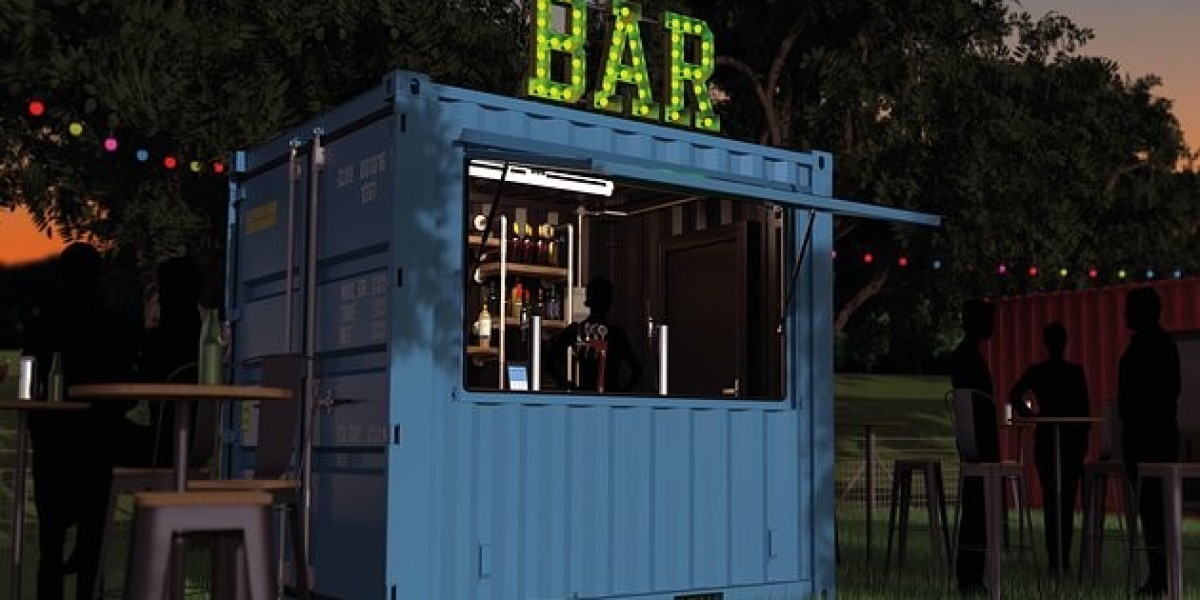Shipping containers have surpassed the straightforward cargo transport that they were originally intended for. Containers can be repurposed for a variety of purposes, from boutiques and retail to modern office and living spaces.
Sizes of containers are governed by ISO regulations. Knowing the precise dimensions of each type is vital in planning the transportation process and maximizing space efficiency.
Transport
There are a range of sizes of shipping containers that are available in the UK and across the globe, each designed to meet the different needs of cargo. From small 8ft containers to colossal 45ft containers Each size serves specific functions in facilitating international trade and commerce. From repurposing into contemporary living spaces and commercial offices to vital agricultural storage, the range of options available is a concert of adaptability and functionality.
While the dimensions of a shipping container could vary slightly, most adhere to a standard in terms of height, width and length. This allows them to be stacked safely in intermodal freight transportation methods like trains and ships, without having to open the cargo. The majority of shipping containers are built with a high-quality aluminium or steel material to shield against the elements, thus reducing the risk of damage during transportation.
The majority of containers have an open or closed lid. Open-top containers can accommodate more cargo by allowing overfilling, while closed-top units are better suited for international shipping as they offer greater protection from the elements. The doors of containers can also be designed to lock into place and provide additional security.
The proper size of a shipping container can help optimize logistics as commerce in the world continues to expand and evolve. From the 20ft and 40ft standard shipping containers to specialised reefers for temperature-sensitive cargo, understanding the various options on offer will help businesses to streamline transport operations.
Shipping containers can be travelled domestically in the UK, or internationally across continents depending on the destination. The kind of shipping method you choose will be based on the cargo requirements you have and if there are any restrictions regarding cargo handling.
Shipping containers are usually transported by sea. Many companies choose to ship their containers directly from the factory to the port. This provides a cost-effective way to getting your goods from point A to point B, because there is no need to purchase specialist cargo handlers or specialized vehicles to transport them.
Stores
Shipping containers play an important role in the global supply chain, offering an efficient method of packaging, securing and transporting cargo across vast distances by road, rail or sea. They are available in a variety of sizes and designs that can be used for a broad variety of uses such as storage of equipment and tools in warehouses, to housing tools and equipment on construction sites. The size of the container depends on the amount of stuff you plan to store. This can affect the storage options you have.
 Storage containers come in various sizes and shapes, and they all meet ISO standards. They can be transported in a safe manner by crane, ship, or truck. The most common kind of shipping container is the dry or general-purpose container, which is available in sizes of 20-foot and 40-foot, with an internal height of eight feet. There are also high cube containers which are a foot taller at nine feet and six inches, and they can offer a significant increase in the capacity of taller objects.
Storage containers come in various sizes and shapes, and they all meet ISO standards. They can be transported in a safe manner by crane, ship, or truck. The most common kind of shipping container is the dry or general-purpose container, which is available in sizes of 20-foot and 40-foot, with an internal height of eight feet. There are also high cube containers which are a foot taller at nine feet and six inches, and they can offer a significant increase in the capacity of taller objects.Refrigerated containers, or reefers, Cogcontainersltd.Com are a particular kind of ISO container that are designed to transport products at a temperature that is controlled. They can be used to transport a variety of products, including fresh produce and pharmaceuticals. They are usually used for long-haul transport and are usually custom-designed to meet the specific requirements.
Other types of shipping containers include open top containers which have a removable roof that allows for easy loading and unloading of cargo. These containers are used to transport large loads that would not fit through doors of standard containers. They are available in sizes of 20 and 40 feet. Flat rack containers are another option, and these have collapsible sides, which allow them to be transported on truck beds.
Tank shipping containers are huge metal containers that can be used to haul gases and liquids. They are made of strong steel and surrounded by an impermeable substance which protects the cargo from leakage and corrosion. These containers can be used for transporting hazardous materials, such as chemicals and crude oils.
Commercial
The shipping container has a long-standing history of being a multi-purpose tool for securing, moving and storing goods worldwide. It was originally designed to transport cargo across oceans, shipping containers have experienced huge growth in popularity for a variety of different purposes. The sheer diversity of container sizes, from tiny 8ft containers that are perfect for personal storage and boutiques to massive containers exceeding 45ft, ensures that there is a suitable model for every possible application.
Selecting the best freight container for your business requires careful consideration of internal and external dimensions. ISO container dimensions allow you to optimize cargo loading and ensure that you are in compliance with shipping regulations. It also can save you time and money, by avoiding the need to purchase several containers at the last minute or to organize costly last-minute changes to shipping plans.
Shipping container dimensions are usually measured by their length as well as width and height. The dimensions of shipping containers are set in order to ensure compatibility with international standards. They can be transported using various intermodal freight modes like rail, sea, or road.
The 20-foot container is among the most popular. This is a preferred choice for both international shipping and domestic storage as it provides plenty of space for cargo of medium size. With the capacity to payload of around 29,800 pounds (approximately 20,000 kilograms) it can easily accommodate a large amount of equipment and goods.
A 10ft shipping container is a great option for smaller businesses and can be easily modified to various applications. The payload ranges from 3,700 to 4,200 lbs (approximately 2400-2900 kg) dependent on the way in which the container was modified.
Companies across the UK have been utilising shipping containers for innovative expansion and storage purposes. The versatility of these containers is unmatched. They can be turned into mobile kiosks, offices or on-site storage during construction projects. Willbox has a large selection of used or new shipping containers available for hire or sale in the UK. This allows you to find the container that best meets your requirements.
Residential
Shipping containers can be utilized for a variety of reasons and can be used for residential. The sturdy steel containers can be used to construct studios, homes, offices and many more, and they're also an excellent option for temporary storage. Shipping container homes have become an increasingly popular choice for homeowners. They're also a cost-effective way to build a house. There are several important factors to consider prior to deciding on this option.
 Shipping container homes are made from modified shipping containers, the same type of cargo trucks and ships use to transport goods across long distances. These containers are typically built out of galvanized or reinforced steel, and they're designed to withstand the harshest weather conditions. They're also adjustable and can be modified to fit any space is needed. These features make shipping containers a smart choice for homeowners looking to build a low-cost and sustainable home.
Shipping container homes are made from modified shipping containers, the same type of cargo trucks and ships use to transport goods across long distances. These containers are typically built out of galvanized or reinforced steel, and they're designed to withstand the harshest weather conditions. They're also adjustable and can be modified to fit any space is needed. These features make shipping containers a smart choice for homeowners looking to build a low-cost and sustainable home.The most common shipping container sizes are 20 feet and 40 feet. These standard dimensions allow them to be loaded and transported using a variety of modes of freight transportation, ranging from train to ship. They are also designed to be stackable, which makes them ideal for storage and shipping solutions at any location.
There are many other sizes of shipping containers too. Willbox offers smaller 8-foot and 9-foot variants of these containers, which are ideal for small spaces or flexible storage requirements. These smaller containers can be constructed by cutting down larger standard shipping container sizes and can be adapted to your requirements.
The typical square footage of the shipping container is 160 or 320 square feet, depending on whether you choose a high cube or a regular model. The high cube container comes with 9.5-foot ceilings while the standard container has 8.2-foot ceilings. High-cube containers tend to be preferred because you can install insulation and run utilities without worries about running out space.
The biggest disadvantage of living in containers is that they are not as energy-efficient as a traditional home. This is a trade-off that can be compensated with solar panels, or other renewable energy sources. A home constructed from shipping containers can also be difficult to finance as most lenders require that the containers be placed on a permanent foundation.








